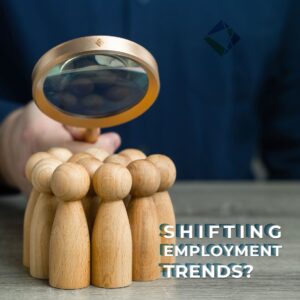Remember 2015? The force awakened with the death of Jon Snow after he saw the price of the first Apple watch (or something to that effect). It was a simpler time, when Netflix reigned supreme and cable TV was the undisputed champion of home entertainment. A happier time even, as we, blissfully unaware, drifted through the trickle of streaming on our way to the plunge into digital viewing abyss. Fast forward to 2023, and the tides had turned. Home media had undergone a dramatic transformation in a few short years.
The Rise of the Streaming Multiverse:
Back then, viewers happily subscribed to just one service, primarily Netflix. But cable’s reign began to crumble as the allure of on-demand content and “skip ad” buttons took hold. The pull of choice, it seems, is a double-edged sword. While Netflix initially reigned supreme, it ignited a firestorm of competition. New streaming services emerged at a dizzying pace, each promising a unique library of content.
Cable, once the undisputed king of entertainment, found itself increasingly irrelevant. Who needs a dozen channels of reruns when you can access a universe of high-quality on-demand shows and movies? The once-mighty cable industry began its descent, its subscribers fleeing to the exciting new world of streaming.
While the streaming revolution brought undeniable benefits, a tinge of nostalgia remains for the days of “one and done” streaming. The sheer volume of choices can be overwhelming, and the ever-growing list of subscription fees can strain the budget. Should we have stopped and asked ourselves, is double the content worth double the cost? In the meantime, streaming consumption has skyrocketed, (so have the subscription fees). We are bombarded with endless choices, each vying for a piece of our entertainment budget.
A glimpse into the subscriber pyramid from DecisionLogic’s Data:
Prime Video’s Power Play: Prime Video has seen a meteoric rise, jumping from a niche player (6%) to a major contender (35%) among our consumers.
Netflix Holds Steady: The OG of streaming, Netflix, maintains a loyal fanbase, hovering between 25% and 29% reach.
Apple TV’s Surprise Takeoff: Apple TV, a relative newcomer, has exploded in popularity, reaching a staggering 27% of our consumers – a testament to the power of strong original content.
Cable’s Nosedive: Meanwhile, cable subscriptions have plummeted from a comfortable 8% to a meager 2%, showcasing the clear shift towards streaming dominance.
The streaming revolution promised a golden age of entertainment – a vast library of content at our fingertips, whenever we wanted it. And it delivered! Today, we have more shows and movies than ever before, all available on-demand. A bounty of content but at what cost? We are left with decision fatigue and the constant struggle to manage mounting subscription fees.
Faced with a sea of streaming services, each vying for our attention, we are left paralyzed by decision fatigue. What to watch? Which service has the latest must-see show? The endless options become a burden, robbing the joy of simply curling up with a good movie as you dig though each brand’s current offerings. (And somehow there is still nothing to watch!?)
Then there is the financial squeeze. Subscription fees for each service add up quickly, creating a hidden entertainment tax. Adding insult to injury the in-app costs are enough to make you long for the days of yesteryear waiting in line at the local video store to get your weekend flick picks. That is not the only headache making us want to “be kind, and rewind” back to cheaper days. Managing multiple accounts, with their different logins and billing cycles, becomes a logistical nightmare for your bank statement.
Speaking of the digital wallet taking a hit, how has this impacted the consumer? Is this just the growing pains of consumption? The answer seems to be a resounding, “Yes”. Overdraft fees are a clear indicator of the strain on our wallets. Back in 2015, the average American shouldered a hefty burden of $187.67 in overdraft fees. “Skip intro” to 2023, and that number had skyrocketed to a staggering $429.48. Are we saying that streaming services are the sneak preview to the next economic crash? No, but maybe.
According to our data examining the trajectory of the average income, there was a definitive decrease in average income stability, as in the equivalent of thirty-seven points to a credit score. (You read that correctly.) Consumers income stability took a huge hit and has never completely recovered. It gets scarier from there however as we tie in loan details gathered. In 2016 we saw just under two million loan transactions come through our system. By 2023 our database of over nine billion transactions captured a jaw-dropping trend of almost seventeen million. We are not saying it takes a loan to pay off your streaming addiction, but it is hard to believe that digital entertainment has not had an economic impact on today’s consumers when you follow the numbers. It might be time to give your billfold a break and brush off that library card.



